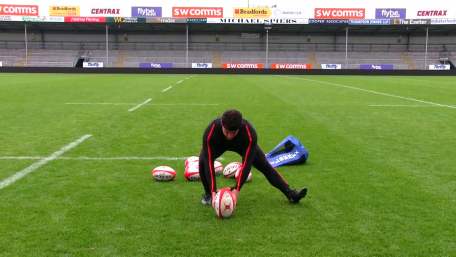HOT
 Xsens’ new MTi 600-series wins AUVSI XCELLENCE …
Xsens’ new MTi 600-series wins AUVSI XCELLENCE … The Future Group, Xsens and IKINEMA partner up
The Future Group, Xsens and IKINEMA partner up Live data analysis of the long jump at the FBK G…
Live data analysis of the long jump at the FBK G… Xsens and Ergoneers join forces to launch ergono…
Xsens and Ergoneers join forces to launch ergono… New MTi 600-series industrial-grade inertial sen…
New MTi 600-series industrial-grade inertial sen… Xsens North America Celebrates New Office Grand …
Xsens North America Celebrates New Office Grand … Xsens’ latest update takes outdoor motion captu…
Xsens’ latest update takes outdoor motion captu…
Motion Capture on the rugby field
When it comes to producing the very best talent in rugby, the Exeter Chiefs are a cut above the rest. Big-name England internationals including Jack Nowell, Henry Slade, Sam Simmonds, Luke Cowan-Dickie and Jack Maunder, have all risen from grass-roots to the international stage at Exeter as the club continues to make strides in the Rugby Union. With a recent investment from Red Bull to support their new fitness analysis suite, the Chiefs are now using cutting-edge equipment, including inertial motion capture, to support the development of their players and prevent injury. This can be achieved through benchmarking movement analysis. We spoke to Exeter’s Sports Science Analyst, Patrick Carden, and the Head of Academy, Rob Gibson, to discuss the role of motion capture within player enhancement and how they’re bridging the gap between the pitch and the lab.

Science and innovation
Chance was not a factor in the selection of Exeter Chiefs for Red Bull’s partnership. The club is renowned for producing an excellent standard of players and after discussions between both parties, Red Bull became impressed with the club’s focus on player development, expressing their intentions to join Exeter’s vision. As Rob reiterates:
“We have a rich history of transforming our players from within the Southwest of England, developing local lads that are now competing on the international stage. We had discussions on how the partnership could be utilised in a way that specifically targets future development. I wanted to focus on science and innovation, looking at marginal gains to create opportunities for our players to become more robust and resilient, with an improved technical proficiency to go into Rugby at the highest level.”
Motion capture on the field
Patrick had previously spent four years analysing movement with different forms of motion capture but found the restrictions of the lab environment challenging when trying to accurately measure realistic movement. Small details, such as not being able to wear rugby boots on a lab floor can significantly change the data recorded, with technique adaptations providing information that isn’t as reliable.

“A penalty kick in rugby and a rapid change of direction are both quite specialised movements and in a lab, we’re not as easily placed to look at the technique” explains Patrick.
“Using a marker-based motion capture system required a large number of sensors to be stuck on each player. This leads to a minimum of 10 minutes in preparation time before entering the motion capture lab. With the Xsens MVN, adjusting the sensors, collecting the limb lengths and then completing the calibration is a lot quicker and a lot less painful for the players.”
Healthy reference data
The suits provide important data to the medical and physiotherapy staff at Exeter, producing detailed information for injury prevention and rehabilitation. By analysing player movement in the lab and on the pitch, benchmarks can be set for common exertions executed by the players. This healthy reference data can be used to inform decisions during the implementation of player rehabilitation. It also aids in setting a standard procedure for correct posture and technique.
“We are looking at tests to gauge whether an athlete is ready to return to play. We had simpler protocols with the previous motion capture system. Now we’re looking to add more challenging protocols. There are loads of different movements that we’ve started capturing for analysis.”
“While performing data analysis, we’re able to give Jamie Fulton, Head of Medical Services, quick feedback. This makes a significant difference when compared to spending a week crunching numbers.“
Beyond the increase in available data, working outside of the lab provides positive interactions for the players, bridging the gap between data analysis and rugby itself. Patrick describes the excellent response he’s witnessing from the team:
“For the players, it’s the instant visual representation; you’re moving and you’re watching the avatar move around, mimicking what you do – and that all happens in a really short space of time which engages the players.”

Keep innovating
Moving forward, Exeter aims to use motion capture at an increased capacity, maintaining the club’s leading position at the forefront of player development. The use of inertial based systems sets them apart from their competitors, with Exeter being one of the first to utilise the technology. Despite this, Rob, Head of the Academy, refuses to stand still and is looking to take their movement research to greater heights.
“We are producing some of the best rugby players in the world and we will continue to do so. By using the latest technology, the Chiefs can stay at the forefront of player production, innovation, and development.”




































